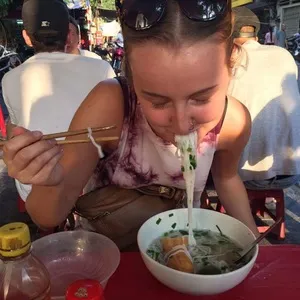The haul to 21 is a long one for us Americans. Those extra three years beyond most of the world’s legal drinking age are inevitably filled with poorly proportioned dorm room screwdrivers and low quality keg beer (let’s be real, keg foam). By the time we finally make it to 21, the freedom to sit down at a bar and order a respectable drink is both enchanting and bewildering.

You have seen parents, grandparents, and even TV and film characters toting around garnished martinis and Manhattans, but when you actually read what goes into these drinks you’ll likely find yourself wondering “what is vermouth?” — because it more than likely never made it into your DIY dorm bar repertoire.
Where Vermouth Came From

Though the word Vermouth actually comes from the German word Wermut meaning wormwood, Vermouth is a concoction that originated in the economically and politically linked Italian Piemonte region and French Savoy region of the now nonexistent Kingdom of Sardinia. The regions shared the local wine industry and drew upon the nearby natural resources found in the alpine environment to create what we know today as sweet (Italian) vermouth and dry (French) vermouth.
What Vermouth Is

Technically speaking, vermouth is a fortified aperitif wine. The base of nearly all vermouth is a white wine or a mistelle, which is a mixture of white grape juice or slightly fermented white wine and brandy — a sweeter base than plain white wine.
How Vermouth Is Made
To this base, additional distilled alcohol is added to raise the proof, often in the form of brandy — this accounts for the fortified portion of its technical description.
In addition to extra alcohol, the base wine is also aromatized with a number of botanicals, which is an umbrella term for any substance obtained from a plant, including roots, flowers, seeds, herbs, spices, etc. This accounts for the aperitif portion of vermouth’s technical description, as aperitif wines are wines that have been infused with botanicals in order to add flavor and color to the wine.

Nearly all vermouths contain its namesake, botanical wormwood, which is an herb that is speculated to have medicinal qualities such as eliminating intestinal worms (though there is not a scientific consensus on this matter). However, the number of possible additional botanicals is staggering and includes everything from licorice root to lemon peel to lavender to cardamom. Caramel color (aka burnt sugar) is often responsible for the dark color and sugary taste of sweet vermouth.
A Novice’s Opinion
I taste tested budget-friendly varieties of both types of vermouth, and found that sweet vermouth has a very earthy and spicy character, making it understandably perfect for the Manhattan, a drink containing whiskey, bitters, and sweet vermouth.
On the other hand, dry vermouth tastes like a flat, extra-alcoholic champagne, making it the ideal candidate for the Martini, a drink containing vodka or gin, bitters, and dry vermouth. After tasting the drinks, I am incredibly impressed by the fact that some Europeans drink this stuff straight.
Opening up a cocktail menu and giving it a thorough read through for the first time can be daunting, but thankfully we have the rest of our lives to learn and experiment. Don’t be afraid to ask the bartender questions such as “what is vermouth?” and “what exactly are bitters?”, because everybody has to start somewhere.


